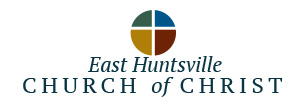SERVICE TIMES
Sunday Bible Class 9:00am
Sunday Worship 10:00am
Sunday Worship 1:00pm
Wednesday Bible Study 7:00pm
The Influence of Modern Trends On The Church (Part 1)
Influence is a powerful thing. Every person both influences and is influenced by others in varying degrees. Jesus stressed the importance of godly influence when he compared his disciples to “salt” (Matt. 5:13), and Paul warned of the power of bad influences when he noted that “evil companionships corrupt good morals” (1 Cor. 15:33 ASV).The Greek word for “companionships” is homilia having to do with “association.” Here it denotes “bad company” (Arndt and Gingrich, 568). One gets to be like who he runs with.
The Influence of the Primitive Church
It is a remarkable historical reality that the church of Jesus Christ, as such was constituted in the initial centuries of its existence, was a body of tremendous influence. In point of fact, it revolutionized the antique world. The Lord hinted of this in his prophetic parable of the “leaven” (Matt. 13:33).
Historians have noted that as a consequence of the sway of Christianity, many evils of the ancient world were abolished, or at least curtailed (e.g., crucifixion, the brutal gladiatorial games, slavery, the abuse of women, infanticide, etc.). Even skeptics have acknowledged such.
British philosopher Bertrand Russell conceded that the influence of Christianity “remains the inspiration of much that is most hopeful in our somber world” (Russell, 137).
It is not without significance, however, that during this time-frame, when the church was exerting such a wonderful impact, it was being persecuted bitterly. Then, a strange thing happened. In A.D. 313, Constantine issued his famous “Edict of Toleration,” which brought an end to Christian persecution, and which, unhappily, accelerated an era of spiritual decline. Christianity even became a “state religion,” and, ultimately, the church was “baptized” in an atmosphere that can only be described as a “this-world-ness.”
For an interesting survey of this period, see chapter IX “The Imperial Church” in Hurlbut’s The Story of the Christian Church. Great and devastating changes were wrought which finally resulted in an egregious, fully-organized apostasy, the residue of which abides to this day.
Our More Recent History
The concept of “restoring” pristine Christianity was revolutionary, both in Europe and in America. Courageous pioneers sought a return to the original pattern. The idea caught on, and the cause of the “ancient order” spread like a prairie fire across the frontier in the waning days of the nineteenth century.
In the late 1800’s, students of the old Nashville Bible School (later named after David Lipscomb) baptized some 5,000 souls in a five-year period. In the early portion of the last century, the Lord’s church was one of the fastest growing religious bodies in America.
A typical example of the influence of the church was seen in the Tabernacle Meetings conducted by N. B. Hardeman in the early 1920s. When the first meeting was held in March-April of 1922, the old Ryman Auditorium in Nashville, Tennessee was “packed and jammed,” with 6,000 to 8,000 people — with an estimated 2,000 to 3,000 being turned away (Hardeman’s Tabernacle Sermons, 11). And there was no compromise of doctrine in Hardeman’s sermons! Those were glorious days for the kingdom of Christ.
But in the early decades of the previous century something else was happening. A movement known as “Modernism” was evolving. It reflected an inclination to reject the concept of propositional truth based on divine authority.
Men like Presbyterian clergyman Harry E. Fosdick (1878-1969) argued that the Bible had developed along evolutionary lines. And they rejected the supernatural elements of Scripture. This ideology became pervasive in both Catholicism and mainline Protestantism. A major component of the restoration heritage (the Disciples of Christ) was also influenced by this heresy.
More recently Modernism has been succeeded by a philosophy known as “Postmodernism” This dogma, more dangerous even than modernism, is a mid-to late-20th-century theory which contends there is no such thing as real knowledge—at least in the objective sense.
One writer says that Postmodernism reflects a “rebellion against all aspects of the modern culture that had prevailed in the West since the late 19th century” (Dever, 30). Postmodernism has impacted the religious community at large in a devastating fashion, and the churches of Christ have been significantly influenced by this ideology as well.
For an excellent treatment of postmodernism as it relates to the church, see Phil Sanders’ Adrift: Postmodernism in the Church.
Wayne Jackson
Originally from The Christian Courier
(There will be two additional parts of this article in the next two weeks.)

Sorry, comments are closed for this post.